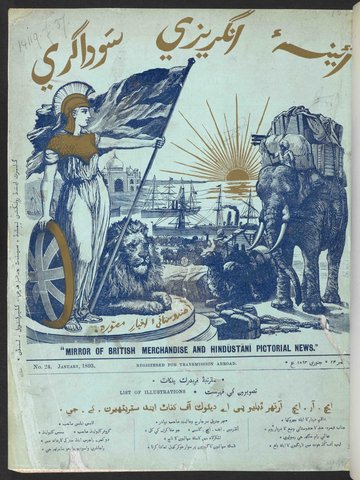
Conflict and Imperialism
The politics of empire significantly shaped the lives of South Asians in Britain, with the ongoing legacies of colonialism, anti-colonial activism and decolonization
Overview
Following the Battle of Plassey in 1757, the East India Company (founded 1600) took over administrative control of the East of India, gradually expanding across the Indian subcontinent. The regular movement of ships between Europe and the subcontinent brought South Asians to Britain from the seventeenth century, many of whom, such as Indian seafarers, known as ‘lascars’, were essential to the ongoing enterprise of empire, ensuring the flow of people, raw materials and manufactured goods. From the 1830s, as the historian Rozina Visram has described, South Asians began to settle in the United Kingdom in noticeable numbers and we see the start of the making of community by South Asians in Britain, while still under imperial rule.
Queen Victoria’s reign from 1837 to 1901 was a highpoint of imperial grandeur. She often encouraged Indian princes to visit the United Kingdom to revel in imperial pomp. This was typified by the celebrations of Victoria’s Golden and Diamond Jubilees, the Colonial and Indian Exhibition of 1886 and then the coronation of Edward VII in 1902. Queen Victoria amassed a group of Indian ‘favourites’ in her court from her munshi Abdul Karim to the Maharaja Duleep Singh and Princess Victoria Gouramma.
In 1858, through a Parliament-sanctioned proclamation, the British Crown took over control of British India from the East India Company, establishing the India Office in London and the Government of India. In 1877 Queen Victoria was declared Empress of India. In 1885 the Indian National Congress was set up as a body that first demanded more representation for Indians within British India but developed into an anti-colonial organization with leading figures including Dadabhai Naoroji, M. K. Gandhi and Jawaharlal Nehru. In the UK, the India League led by V. K. Krishna Menon campaigned for Indian independence, engaging with British politicians. Mohammed Ali Jinnah was actively engaged with the Fabian Society and the Muslim League. Many Indian politicians participated in the Round Table Conferences in London from 1930 to 1932 over the nature of potential independence.
Anti-colonial resistance often took violent turns in Britain. In 1909 Madan Lal Dhingra shot an India Office official, Sir Curzon Wyllie, on the steps of the Imperial Institute. Dhingra was part of India House, a hostel in Highgate, London frequented by various revolutionaries such as Shyamaji Krishnavarma, who published the Indian Sociologist, and the founder of the Hindu Mahasabha, V. D. Savarkar. In 1940 Udham Singh shot Michael O’Dwyer in retaliation for the Amritsar Massacre.
The partition of India and Pakistan in 1947 may have marked independence from British imperial rule but was not the end of imperialism in South Asia. Ceylon was granted Dominion status in 1948. Pakistan retained the British monarch as head of state until 1956. India became a republic in 1950. South Asians of the Windrush generation, such as Sam Selvon and Shiva Naipaul, migrated from the Caribbean to Britain. British Bengali communities, primarily in London, united as part of the Bangladesh Liberation Movement for an independent Bangladesh in 1971. In 1972 the expulsion of South Asians from Uganda was another legacy of imperialism and the entangled process of decolonization.
Another interesting thing
South Asians in Britain were connected to transnational anti-colonial solidarities along multiracial lines. George Padmore from Trinidad was connected to various Indian nationalists, including T. Subasinghe, and organized the Pan-African Congress in Manchester in 1945, which included South Asians. Jawaharlal Nehru was actively involved in the League Against Imperialism, which had socialist roots. Harold Moody, Kamal Athon Chunchie and V. K. Krishna Menon were engaged with the League of Coloured Peoples. These organizations all fostered a sense of political Blackness that united colonized people across the empire. They had ongoing legacies for South Asians in the 1970s and 1980s who engaged with the British Black Panthers and solidarities along multiracial lines.
Browse this theme
Image credit
Cover of Mirror of British Merchandise, No. 24 (Jan. 1893), Courtesy of British Library Board
Public Domain
